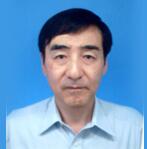Invited Speaker----Dr. Masahiro Goto

Dr. Masahiro Goto, Professor, Oita University, Japan
Dr. M. Goto is a professor of Oita University, Oita, Japan. He had a Ph.D. degree in Mechanical Engineering, Kyushu University, Fukuoka, Japan in March 1984. After receiving the Ph.D. degree, he was hired by Oita University as a lecturer in April 1984, and promoted to an Associate Professor in 1986, a Professor in 2001. His past research interests covered a wide range of microstructure and strength of metals such as carbon steel, low-alloy steels, aluminum alloys, Ni-based super alloys, titanium alloys. His current interests are in microstructure and strength of copper alloys and ultrafine grained copper. In the last five years, he participated as invited speaker (including two keynote speakers) in five International conferences on Materials Science and Engineering: 4th Crack Paths (2012, Italy), 7th Inter. Conference on AMDP (2014, Korea), 17th International Conference on CMEM (2015, Croatia), 32th Spanish Conference on Fracture & ESIS-TC10 International Conference (2015, Spain), and 18th International Conference on CMEM (2017, Spain).
Speech Title: Role of precipitate microstructure near grain boundaries on the behavior of fatigue cracks in Cu–6Ni–1.5Si alloy
Aims: Precipitate-strengthened Cu–Ni–Si alloys are widely used in electrical/ electronic components, because of their good combined properties of electrical conductivity and strength, which are attributed to the precipitation of a second phase (Ni
2Si) in the matrix. To develop Cu–Ni–Si system alloys with improved fatigue resistance, a fatigue mechanism that takes crack initiation and propagation into account should be investigated. Therefore, the objective of the present study was to identify the fatigue crack initiation mechanisms of precipitate-strengthened Cu–Ni–Si alloy, emphasizing the role of the microstructure on the behavior of fatigue cracks.
Methods: Material was Cu–6wt%Ni–1.5wt%Si alloy which was solution heat-treated at 980 °C for 1 h and aged at 500 °C for 0.5 h. All fatigue tests were carried out using a rotating bending fatigue machine operating at 50 Hz. The fatigue damage on the specimen surface and on the fracture surface was observed by using OM and SEM.
Results: The alloy showed heterogeneously precipitated Ni2Si particles and precipitate free zone (PFZ) around GB areas that was formed as the result of solute atoms’ absorption near the heterogeneous precipitates. The fatigue cracks were found to originate from the GBs. Just after the initiation, the cracks tended to grow along the slip planes in the adjacent grains rather than along the GBs.
Conclusions: The fatigue cracks were generated from GB areas because of the PFZ-induced localized high stress/strain distribution, followed by the growth along slip planes in grains sharing GBs.
Acknowledgements: This study was supported by a Grant-in-Aid for Scientific Research (C) (KAKENHI: No. 26420021) from the Japan Society for the Promotion of Science, as well as a National Research Foundation of Korea (NRF) grant funded by the Global Frontier R&D Program (2013M3A6B1078874) at the Global Frontier Hybrid Interface Materials R&D Center funded by the Ministry of Science, ICT, and a Future Planning and National Research Foundation of Korea (NRF) grant funded by the Korea government (MSIP) (no. 2011-0030058).

